THE Alpujarra is a region known for its fantastic range of fauna and flora. Its cultivated slopes play home to everything from roaming Ibex (mountain goats) and jabali (wild boar) to farm animals, working beasts such as mules, and domestic pets.
Sadly, like most of Spain, it has a problem with lost and abandoned animals – especially dogs. Fortunately, it also has many kind people dedicated to helping our four-legged friends.
From hunting dogs who have reached the end of their “useful life”, bitches used for breeding who are considered “past it”, animals shoved out of cars at the roadside, and puppies dumped in boxes (or worse), the region’s animal shelters have seen it all.
Olive Press spoke to Fedde, a dog rescue volunteer, who currently has six dogs under his care in Las Barreras, Orgiva, in a site with minimal shade. He is hopeful about the recent legislation in Spain, which has declared our companion animals to be sentient “family members”, rather than “property”.

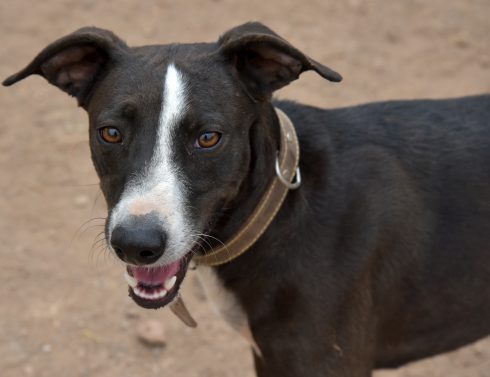
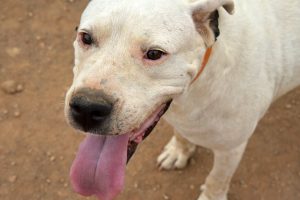
Under Spain’s new animal protection laws, the reproduction of dogs by anyone but licensed breeders is illegal, they cannot be sold in pet shops, and owners can only have five dogs, which must be microchipped. There’s some concern that making reproduction illegal could lead to more puppies being dumped at rescue centres. “A few months ago, someone “threw a puppy over the fence,” said Fedde.
With all these factors, it’s important to source a new furry friend from an animal shelter. As Fedde explains, the animals will already have been neutered and vaccinated against potentially lethal conditions such as parvovirus. A win-win situation.
Even if you don’t want to give a rescue dog a home, you can help your local rescue centre by donating money, food, or just spreading the word.
The dog rescuer – Nomayapa association
Luz María Puga Blanco is the president of Nomaypa, an association that helps animals and endangered plants in La Alpujarra. She rescued her first dog at age four, after finding new-born puppies in the trash. In 2014, she founded Nomayapa with three like-minded people.
She says: “Throughout my life, I have saved thousands of animals. Since Nomayapa was constituted, hundreds.

“In La Alpujarra, dogs have always been treated as things that guard the countryside, and their poor treatment is viewed as normal. The authorities must show, through sanctions, that an animal is a sentient being. People learn when you touch their pocket.”
“Sterilisation is very important. The more animals that are castrated today, the fewer animals will be born in a few months, and then fewer exist to be abandoned.”
No Mayapa runs a monthly spay and neuter day, where it collects a group of cats and dogs from La Alpujarra and takes them to a vet in Granada. The service costs 80e, including the transport, which is much cheaper than visiting a local vet – or feeding hungry puppies!
The adopters:
Ela Graves, Olenka Rosa and Canija – a dog saved from death
Canija was discovered at “death’s door” by Nomayapa in 2020, suffering from Leishmania, which eventually made her blind. She is looked after by two people, on a shift basis, who urgently need a third person to complete the team.
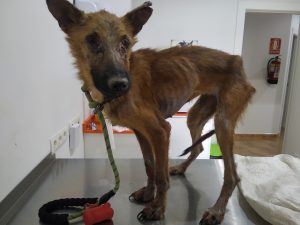
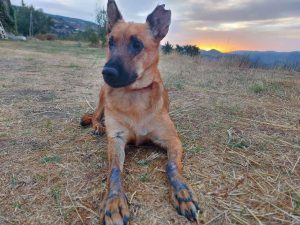
Says Ela: “It has been a 2.5-year haul and she’s now negative for Leish. At the time, I didn’t like dogs and never wanted one. I was the person who transported her and translated for the first fosterer. Later, she came to stay with Olenka and I during the pandemic. Because I have a cat, and she’s a Podenco hunting dog, two people were needed to look after her. When the second person went to work, we needed a third person – and still do! We’re also looking for a new place to live where we can be together again and have a third person on board.”
Sheila Horner and her two rescue pooches – Missy and Holly
Sheila Horner says: “Missy came into my life 12 years ago when a friend found her abandoned in a street in Órgiva. She had an eye infection, was starving and dehydrated, and the vet pronounced her close to death. She soon bounced back to health, although it took her a while not to fear men, especially if they were holding a stick.”
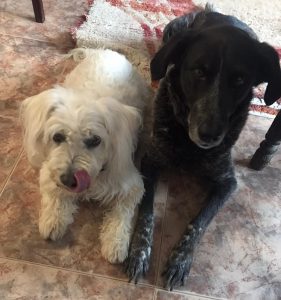
“We found Holly later in the year, on Christmas Eve, in our garden. How she got there remains a mystery. Despite being tiny and not old enough to leave her Mum, she bounced back to health quickly.”
“Despite their bad start in life, both dogs are good-tempered and loving. We have a guesthouse, and all our guests fall in love with them!”
Becci Hughes and her rescues
Over the years, Becci – a resident of Bayacas – has taken home various dogs that have been abandoned around the Rio Chico and Orgiva area. One, called Dora la Explora, died four months later of Leish. She also took on a beagle and a tick and flea-covered puppy with its ears cut off, and that had suffered a castration performed by the previous owner! She now has two rescue dogs – Foxy from Nomayapa, and Lilly, who was abandoned on the street.

- On 23 September, a large adoption fair takes place the Feria de Muestras at Armilla, Granada, featuring all the dog rescue associations from the area.
READ MORE
Tips for taking dog friendly holidays in Spain
Analysis: will new animal welfare laws do enough to change attitudes in Spain

